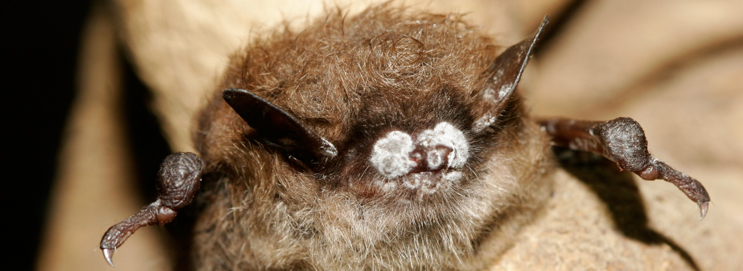
White-nose Syndrome
In 2007, a fungus was discovered growing on hibernating bats in a cave in New York. The fungus, later named Pseudogymnoascus destructans, was found to cause the disease white-nose syndrome (WNS). The fungus grows best in the cool conditions of caves and mines, and WNS affects bats as they hibernate. WNS can cause mortality rates of up to 95% in infected sites. Cause of mortality is still unknown, but the disease appears to cause the bats to wake prematurely out of torpor and burn crucial fat reserves.
The Wisconsin Bat Program monitors bat populations in Wisconsin and conducts yearly surveillance for the disease at bat hibernacula in Wisconsin. In 2011, cave bats in Wisconsin were listed as state-threatened and are protected in the state. Decontamination is required for any person going underground in Wisconsin to prevent possible human transmission of the fungus between sites.
Unfortunately, in spring 2014, Wisconsin Bat Program crew confirmed the presence of WNS at a site in Grant County in the southwest part of the state.


This site is produced in conjunction with the Wisconsin Aquatic and Terrestrial Resources Inventory and sponsored by the Wisconsin Department of Natural Resources. The information presented on this site is subject to the Wisconsin Department of Natural Resources' Legal Notices, Disclaimers, and Terms of Use.